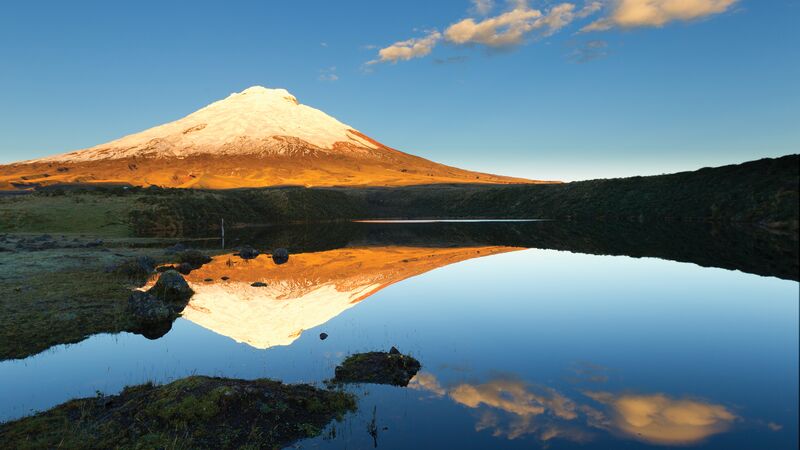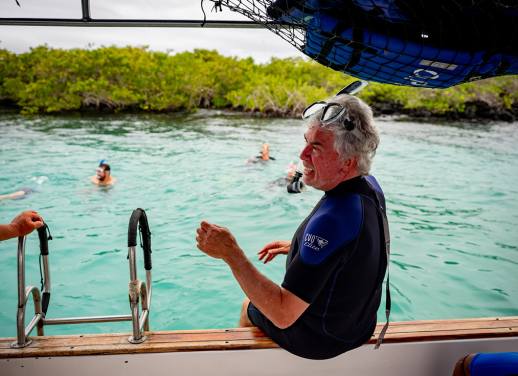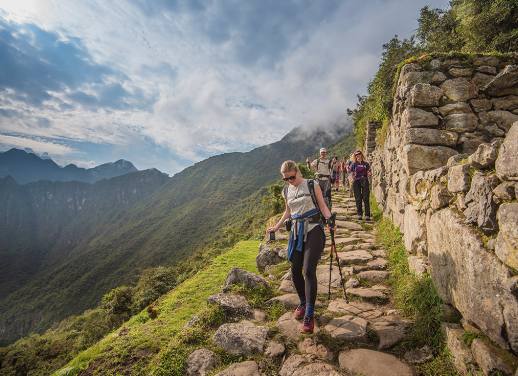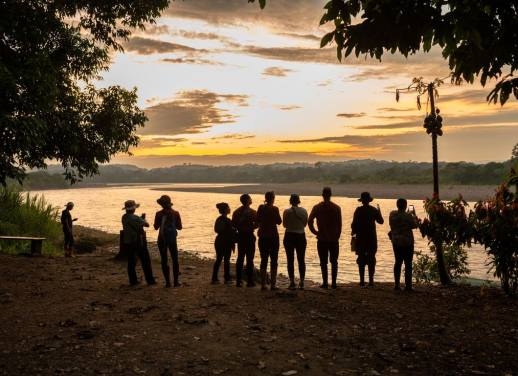There’s more to the name ‘Cotopaxi’ than just colourful fanny packs and sustainable hiking gear; it’s also the South American giant, one of the most active volcanoes in the world. You may need that hiking gear, though, cause you can actually summit this beast.
Believe it or not, Ecuador is more than its Galapagos Islands and Amazon rainforest. This South American hotspot is also home to one of the highest active volcanoes in the world, the famous Cotopaxi. This second-highest peak in Ecuador beckons locals and tourists to its snow-capped crater, which stands at a whopping 19,347 ft (5,897m) high in the Andes.
The ‘most active’ volcano might be intimidating, but there are safe ways to visit this sleeping giant; you just need to plan, prepare and travel with local experts. Not sure how to go about it? I’m here to talk you through the best (and safest) ways to visit this ancient stratovolcano, but first, let’s cover some questions that may be brewing.
When did Cotopaxi last erupt?
Cotopaxi’s last big blast was in August 2015, lasting until January 2016. This was the first eruption in more than 70 years, with the most recent significant eruption in 1904, but Coto has been a sleeping giant since then.
In total, Cotopaxi has had 87 known eruptions since 1744.
Is it safe to visit Cotopaxi?
If you do it in the right way, it is!
Cotopaxi is one of the world’s most closely monitored volcanoes, so the risk of being surprised by an eruption while you’re visiting is low. A summit attempt carries the highest risks, namely altitude sickness, crevasses and potential exposure to sulphur dioxide fumes, but that’s where a local expert comes in.
Intrepid trips are led by experienced local leaders trained to run these trips while calling these bucket list places home. Intrepid leaders are trained, know how to navigate the terrain safely and know how to respond when dangerous conditions arise.
How to visit Cotopaxi
1. Hike around it
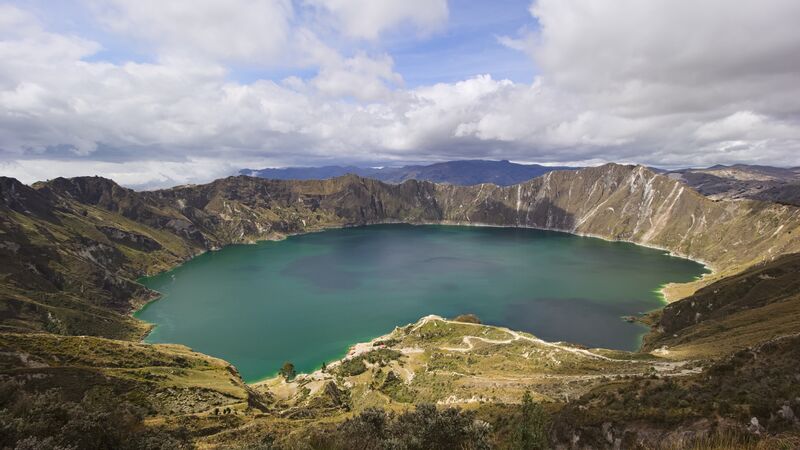
If you’re keen to stretch your legs and take in Cotopaxi’s monstrosity but a summit attempt is a bit ambitious, there are other decent hikes in the national park.
A hike around the 2.2-mile loop that encircles shallow Laguna Limpiopungo is highly recommended for its easily accessible trail and incredible views of the massive volcano. On a clear day, you’ll even be rewarded with a beautiful reflection of Cotopaxi in the lagoon.
Cotopaxi is calling
2. Climb up it
While it is possible to climb Cotopaxi with no technical mountaineering experience, the high altitude, crevasses and steep sections of snow and ice mean this is not a feat to be taken lightly. You’ll need to be fit, fully acclimatized and have an experienced guide with you. Summiting with a guide is actually mandated by law, for safety reasons, of course.
VISIT ECUADOR FOR YOURSELF ON A SMALL GROUP TOUR WITH INTREPID
Climbers arrive at the base of Jose Rivas refugee camp on the slopes of Cotopaxi to practice ice-axe skills and continue the acclimatization process. Then, you’ll try to bag a few hours of sleep before the 1 am ascent, where you’ll start slowly scaling the volcano, tied together in groups.
3. Bike down it
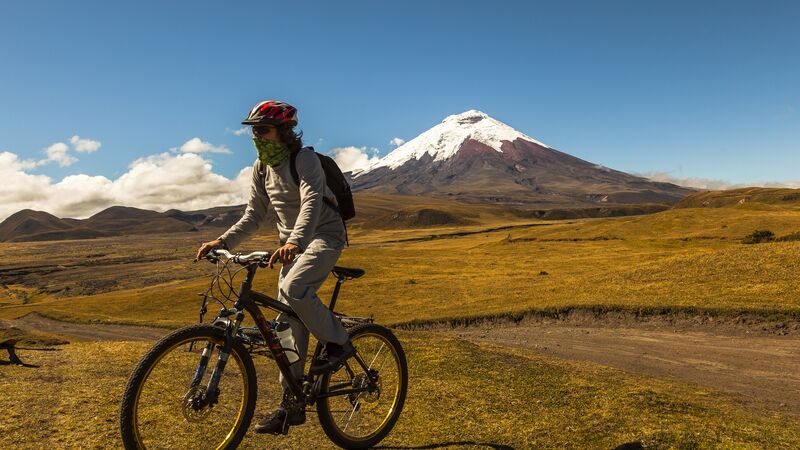
The most popular way to experience Cotopaxi is on two wheels. You’ll head up to the Refugio Jose Rivas parking lot and take a thrilling ride down a rutted gravel road, which slices through a landscape dominated by volcanic ash and tundra, to a picturesque lunch spot near an Inca ruin.
While the terrain can be rough in some sections, and some people might be slightly affected by the altitude (and cold), it’s a manageable ride for anyone comfortable on a mountain bike.
Learn from a local
Travelling with Intrepid is more than just checking off a bucket list destination; it’s about immersing yourself in the local culture and gaining a new perspective from the people who actually live there.
From exploring on-site architecture in the park to visiting a working flower farm and living like a local with a homestay, you’ll learn about life in Ecuador and connect with the landscape and its importance to the people.
Not only will you visit the legendary Cotopaxi, but you’ll leave the country with a deep connection to its culture, rather than just passing through.
RELATED: 8 REASONS WHY YOUR NEXT ADVENTURE SHOULD BE IN ECUADOR

